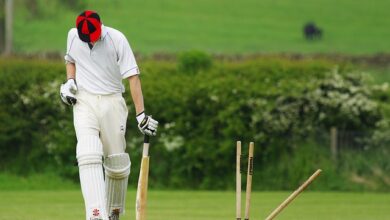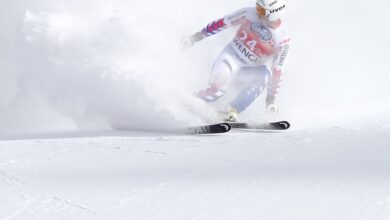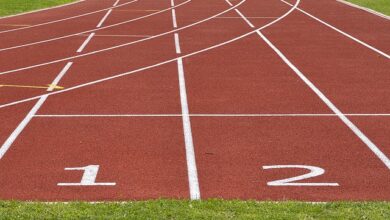How Can Reining Improve A Horse’s Performance?

Reining, a highly skilled and precise discipline within the realm of horseback riding, has been proven to significantly improve a horse’s performance. Through the development of better coordination and balance, horses are able to move with increased fluidity and grace. This not only enhances their overall physical abilities but also allows them to execute intricate maneuvers with greater precision.
Furthermore, reining helps horses increase their responsiveness to cues from riders. By practicing various patterns and exercises that require quick transitions and changes in direction, horses become more attuned to subtle signals from their riders. This heightened level of sensitivity enables them to anticipate commands effectively and execute movements with exceptional timing.
In addition to these benefits, reining can lead horses towards achieving a higher level of performance in terms of athleticism and versatility. The rigorous training involved in this discipline builds strength, agility, and flexibility in horses. As they progress through different levels of difficulty in reining maneuvers, they develop a solid foundation that prepares them for future challenges.
Overall, reining is an invaluable tool for improving a horse’s performance. It not only enhances their physical capabilities but also strengthens the bond between horse and rider through effective communication. By honing their coordination, responsiveness, and overall athleticism, horses can reach new heights in their abilities – ultimately providing both freedom for themselves as well as satisfaction for their riders.
Develop Better Coordination and Balance
Developing better coordination and balance through reining can significantly enhance a horse’s overall performance.
Reining exercises, such as circles, spins, and stops, require precise movements and body control from the horse.
By practicing these maneuvers regularly, horses develop improved flexibility and enhanced athleticism. The repetitive nature of reining helps horses strengthen their core muscles and increase their range of motion.
This increased flexibility allows them to move more efficiently and perform tasks with greater ease. Additionally, reining requires horses to have excellent balance in order to execute maneuvers accurately.
Through consistent practice, horses learn how to distribute their weight correctly and maintain equilibrium while performing intricate movements.
Improved coordination and balance acquired through reining not only benefit the horse during competitions but also in everyday riding activities by making them more responsive to rider cues and reducing the risk of injury.
Overall, incorporating reining into a horse’s training regimen is an effective way to improve their physical abilities and optimize their performance capabilities.
Increase Responsiveness to Cues
Enhancing the horse’s sensitivity to signals is crucial for achieving a higher level of precision and coordination in their movements.
By increasing responsiveness to cues, reining can greatly improve a horse’s performance.
This involves training the horse to understand and react promptly to subtle aids from the rider, such as leg pressure, rein contact, and body positioning.
Through consistent repetition and positive reinforcement, the horse learns to interpret these cues more accurately and respond with the appropriate movement or change in gait.
Improving timing and precision in their responses allows for smoother transitions between maneuvers, better synchronization with the rider’s commands, and ultimately a more refined performance.
Additionally, enhancing communication skills between horse and rider fosters a deeper connection and trust, creating a harmonious partnership that is essential for success in reining competitions.
Achieve Higher Level of Performance
Attaining a superior level of execution in reining necessitates the refinement of movements and synchronization with the rider’s cues. To achieve a higher level of performance, horses must improve their muscle strength and enhance their communication skills with the rider.
Through targeted training exercises, reining can help horses develop stronger muscles, particularly in the hindquarters, which are essential for executing precise maneuvers such as spins and stops. This improved muscle strength allows horses to perform these movements with greater ease and accuracy, ultimately leading to a higher level of performance.
Read also: How Can One Train For Bull Riding?
Additionally, reining requires clear and effective communication between horse and rider. By practicing various cues and commands, horses become more responsive to their riders’ aids, allowing for better coordination and synchronization during complex maneuvers. This enhanced communication leads to smoother transitions between different gaits, turns, spins, stops, and sliding stops.
Overall, through improving muscle strength and enhancing communication skills with the rider, reining can significantly contribute to a horse’s ability to achieve a higher level of performance in this discipline.
Frequently Asked Questions
What are some common mistakes that riders make when trying to develop better coordination and balance in their horse?
When attempting to enhance a horse’s coordination and balance, riders often commit common mistakes such as inconsistent rein contact and improper weight distribution. Effective exercises include shoulder-in, leg-yield, and hill work to develop proper engagement and alignment.
Are there any specific exercises or drills that can help improve a horse’s responsiveness to cues?
Exercises and techniques such as circles, serpentines, and lateral movements can enhance a horse’s responsiveness to cues. These exercises promote balance, coordination, and flexibility, leading to improved overall performance in various disciplines including reining.
How long does it typically take for a horse to achieve a higher level of performance in reining?
The duration of horse training in reining can vary depending on several factors, such as the horse’s prior training, natural talent, and consistency of training. Generally, it takes time for a horse to achieve a higher level of performance in reining, with the progress timeline ranging from several months to years.
Are there any specific training methods or techniques that can help a horse excel in reining competitions?
Horse training techniques, such as consistent practice and proper conditioning, are key to excelling in reining competitions. Additionally, the rider’s balance and coordination play a crucial role in guiding the horse’s movements with precision and fluidity.
Can reining improve a horse’s overall athleticism and agility, or is it primarily focused on specific performance tasks?
Reining can improve a horse’s overall athleticism and agility by developing coordination and enhancing muscle strength. Through precise movements, reining exercises promote balance, suppleness, and flexibility in horses, leading to improved performance in specific tasks.
Conclusion
In conclusion, the practice of reining can significantly enhance a horse’s performance in various ways.
Firstly, it aids in the development of better coordination and balance, which are crucial for executing precise maneuvers. By engaging in reining exercises, horses learn to maintain their equilibrium while performing intricate movements, leading to improved overall control and stability.
Secondly, reining helps increase a horse’s responsiveness to cues. Through consistent training and reinforcement, horses become more attuned to subtle signals from their riders, allowing for seamless communication and prompt execution of desired actions. This heightened sensitivity enables riders to fine-tune their commands and achieve greater precision in guiding the horse’s movements.
By mastering these fundamental aspects of reining, horses can reach a higher level of performance. They showcase increased fluidity and gracefulness while executing complex patterns and transitions. The disciplined training involved in reining cultivates a strong foundation that allows horses to excel in other equestrian disciplines as well.
In summary, by focusing on developing coordination and balance, improving responsiveness to cues, and striving for excellence in performance through diligent practice, reining serves as an invaluable tool for enhancing a horse’s abilities.
Embracing this discipline not only benefits the individual horse but also contributes to the advancement of equestrian sports as a whole. As the saying goes: ‘Reining is the art of finesse; where harmony between rider and horse creates poetry in motion.’



